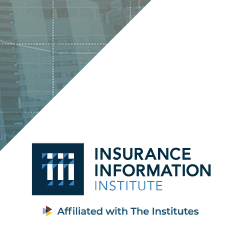Riots across the U.S. and the subsequent damage to thousands of businesses have many business owners asking what their business insurance policies will cover. In this interview, Triple-I Vice President of Media Relations Loretta Worters answers some frequently asked questions about business insurance and what it covers.
Are businesses covered for
property damage from riots?
Yes, they are. Business property that has been damaged by
riot, civil commotion. vandalism and fire are covered under virtually all
businessowners and commercial insurance property policies. This typically includes
damage
to windows, doors, light fixtures, store windows and plate glass on office
fronts. There is also coverage for the contents of the building such as
furniture, office
supplies, computers or machinery that may be either damaged or stolen.
Should a
business insure its building and contents at replacement value or actual cash
value?
A business may
have the option to insure its business property at replacement value or actual cash value. The difference is that replacement
value coverage can help a business replace its property at market prices,
whereas actual cash value coverage takes depreciation into account. Replacement
value coverage costs more, but it also pays out more in the event of a claim.
What
about loss of income?
Businesses that are forced to suspend operations or limit
hours due to rioting, vandalism or civil commotion and have coverage for the
loss of income under business income insurance (also known as business
interruption, or BI) do have coverage. Coverage
is typically triggered if there is direct physical damage to the premises.
What
if a business is unable to access its property due to a
government order? If there
is a curfew in place, how will that impact a business?
While insurance policies vary, typically there is business interruption coverage for civil authority orders, such as curfews (when a business has reduced hours) or when a business is unable to access its property due to a government order requiring the business to close. Such coverage nearly always requires the existence of property damage within some limited geographic radius surrounding the policyholder’s location. This often ranges from 1 to 10 miles. Typically civil authority coverage has a waiting period of 24 to 72 hours, depending on the policy, before a policyholder can begin claiming the benefits of coverage. Coverage typically lasts up to four weeks, but the time period can be extended by paying an additional premium. However, once a curfew is lifted and business can resume, coverage ceases.
Is business income
coverage subject to a deductible?
Under most
policies, business income coverage is subject to either a waiting period, which
acts like a form of deductible or a monetary deductible.
How will
the amount of the business income loss be determined for a business?
Under most
policies, business income coverage includes both net income (the profit a business earns after expenses and
allowable deductions) and the cost of continuing
normal operations.
What
information does a business need to support its business income claim?
Most insurers require the following:
- Profit and Loss statements
- Sales records
- Income tax returns
- Rent or mortgage statements
- Payroll records
What
if a business vehicle has been damaged in a riot?
Damage to vehicles is covered under the
optional comprehensive portion of an auto policy. This provides reimbursement
for damage to the vehicle and its contents caused by fire, falling objects,
vandalism or riot. Comprehensive coverage also reimburses a business if the
vehicle’s windshield is cracked or shattered. Some companies offer glass
coverage without a deductible.
Any advice for business owners?
Know your risks! Every smart business owner recognizes that business insurance is an essential element of an overall business plan. It should be factored in with fixed operational expenses like utilities. Without adequate coverage, business owners may have to pay out-of-pocket for costly damages from a riot, hurricane or other disaster, which could spell financial ruin.







